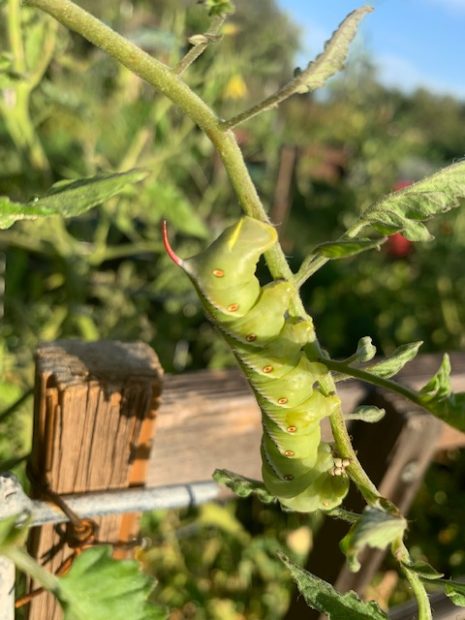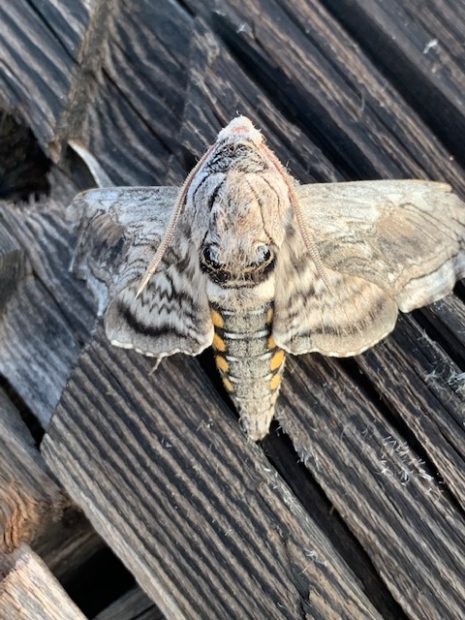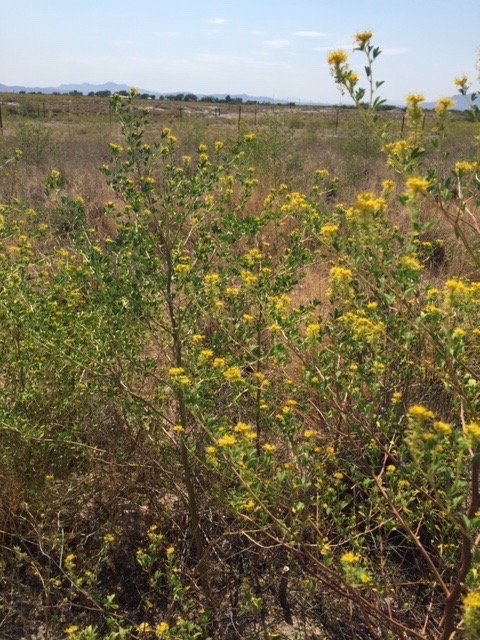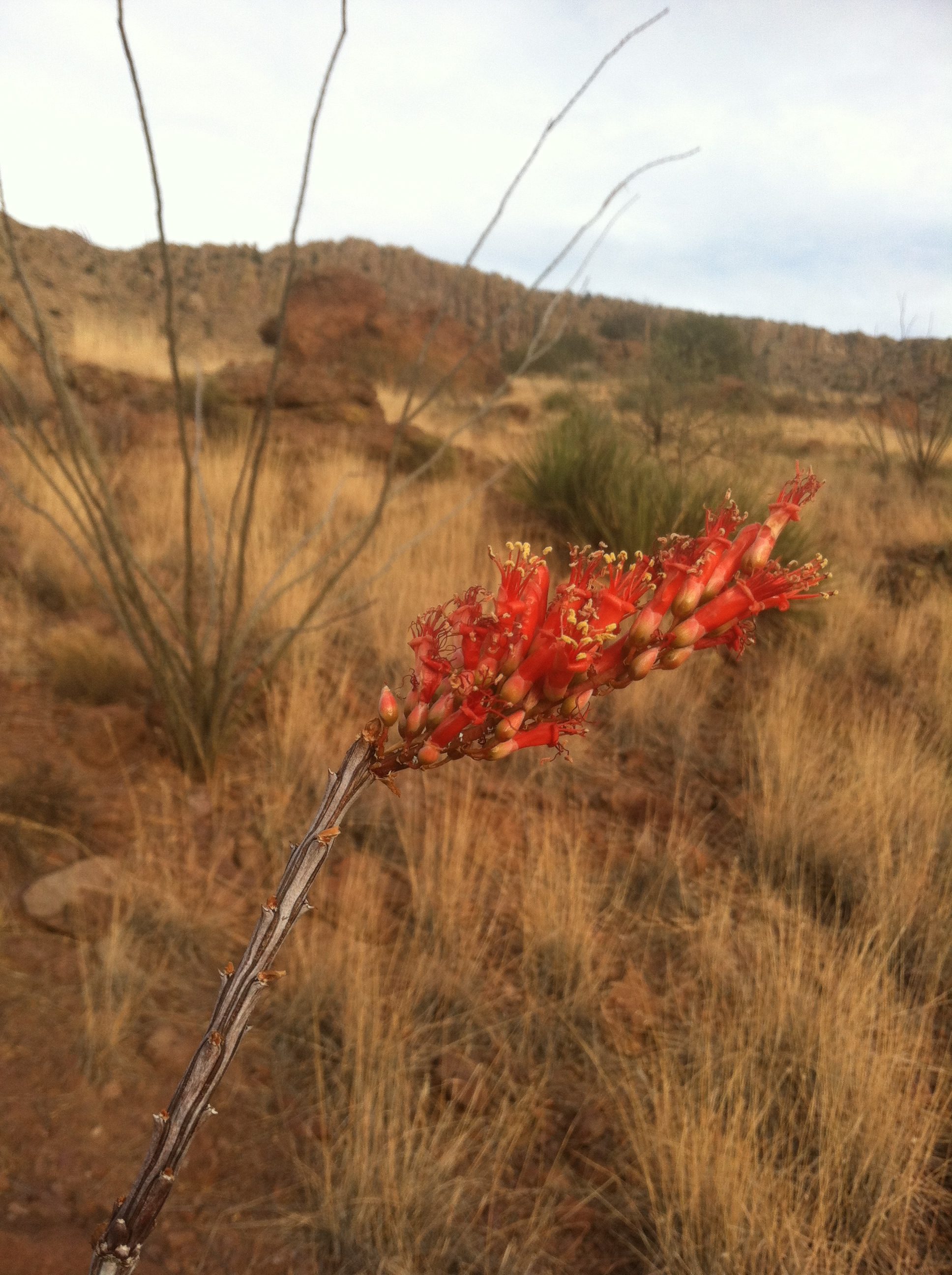The photos are mine of the Mirabilis longiflora flowers and Manduca sexta, the Carolina sphinx moth and tobacco hornworm. Note the seven streamline white stripes and the red horn on the tobacco hornworm. The adult moth, has some pretty cool markings as well.

We don’t find many tomato hornworms (M. quinquemaculata) in our garden, the tobacco hornworm being the predominant glutton. Maybe the Carolina sphinx moth (M. sexta) hits the long flower four o’clock found around our home in between visits to Datura? OR more likely the 5 spotted hawkmoth leaves the research scientists in the nearby hills and hangs out at the Mesquitey homestead.
Thanks to friends Janine McCabe and JenJen Zen, who whether they know it or not…now they do…were part of this moth journey.


The botanical name for Arizona rosewood is Vauquelinia californica. The species name californica means of California, but it’s not found…

Jackass clover is Wislizenia refracta and the botanical name of clammy weed is Polanisia dodecandra. They are both in the Cleome family Cleomaceae. Many...

Chuparosa is one my of favorite plants from back when we used to live outside of Tucson. I bet we had 5 or 6...